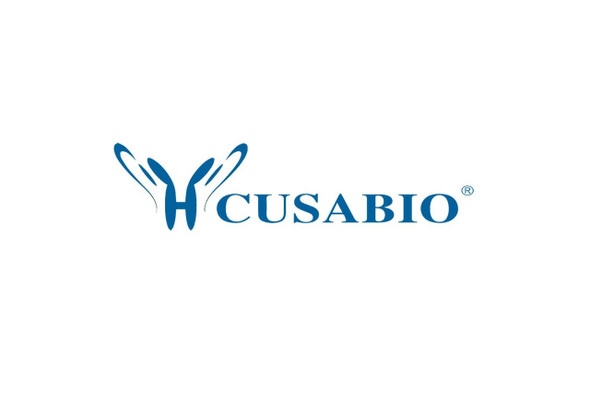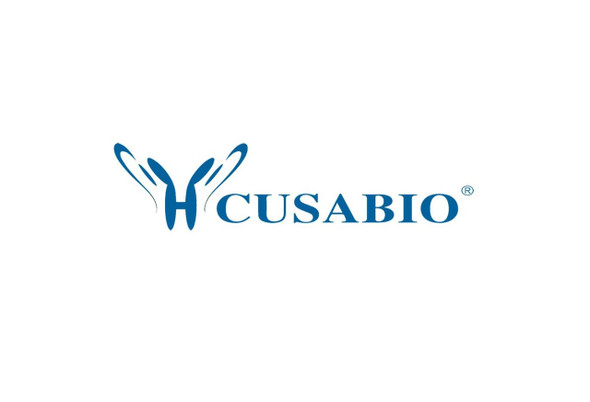Cusabio Human Recombinants
Recombinant Human Origin recognition complex subunit 4 (ORC4) | CSB-EP017234HU
- SKU:
- CSB-EP017234HU
- Availability:
- 13 - 23 Working Days
Description
Recombinant Human Origin recognition complex subunit 4 (ORC4) | CSB-EP017234HU | Cusabio
Alternative Name(s): Origin recognition complex; subunit 4; S. cerevisiae; homolog of; FLJ46668; HSORC4; ORC 4; ORC 4L; ORC 4P; ORC4; ORC4_HUMAN; ORC4L; ORC4L protein; ORC4P; Origin recognition complex subunit 4 (yeast homolog) like; Origin recognition complex subunit 4; Origin recognition complex subunit 4 like (yeast); Origin recognition complex subunit 4 like; origin recognition complex; subunit 4 homolog; Origin recognition complex; subunit 4; S. cerevisiae; homolog-like
Gene Names: ORC4
Research Areas: Transcription
Organism: Homo sapiens (Human)
AA Sequence: MSSRKSKSNSLIHTECLSQVQRILRERFCRQSPHSNLFGVQVQYKHLSELLKRTALHGESNSVLIIGPRGSGKTMLINHALKELMEIEEVSENVLQVHLNGLLQINDKIALKEITRQLNLENVVGDKVFGSFAENLSFLLEALKKGDRTSSCPVIFILDEFDLFAHHKNQTLLYNLFDISQSAQTPIAVIGLTCRLDILELLEKRVKSRFSHRQIHLMNSFGFPQYVKIFKEQLSLPAEFPDKVFAEKWNENVQYLSEDRSVQEVLQKHFNISKNLRSLHMLLMLALNRVTASHPFMTAVDLMEASQLCSMDSKANIVHGLSVLEICLIIAMKHLNDIYEEEPFNFQMVYNEFQKFVQRKAHSVYNFEKPVVMKAFEHLQQLELIKPMERTSGNSQREYQLMKLLLDNTQIMNALQKYPNCPTDVRQWATSSLSWL
Source: E.coli
Tag Info: N-terminal 6xHis-SUMO-tagged
Expression Region: 1-436aa
Sequence Info: Full Length
MW: 66.4 kDa
Purity: Greater than 90% as determined by SDS-PAGE.
Relevance: Component of the origin recognition complex (ORC) that binds origins of replication. DNA-binding is ATP-dependent. The specific DNA sequences that define origins of replication have not been identified yet. ORC is required to assble the pre-replication complex necessary to initiate DNA replication. Binds histone H3 and H4 trimethylation marks H3K9me3, H3K27me3 and H4K20me3.
Reference: Generation and annotation of the DNA sequences of human chromosomes 2 and 4.Hillier L.W., Graves T.A., Fulton R.S., Fulton L.A., Pepin K.H., Minx P., Wagner-McPherson C., Layman D., Wylie K., Sekhon M., Becker M.C., Fewell G.A., Delehaunty K.D., Miner T.L., Nash W.E., Kremitzki C., Oddy L., Du H. , Sun H., Bradshaw-Cordum H., Ali J., Carter J., Cordes M., Harris A., Isak A., van Brunt A., Nguyen C., Du F., Courtney L., Kalicki J., Ozersky P., Abbott S., Armstrong J., Belter E.A., Caruso L., Cedroni M., Cotton M., Davidson T., Desai A., Elliott G., Erb T., Fronick C., Gaige T., Haakenson W., Haglund K., Holmes A., Harkins R., Kim K., Kruchowski S.S., Strong C.M., Grewal N., Goyea E., Hou S., Levy A., Martinka S., Mead K., McLellan M.D., Meyer R., Randall-Maher J., Tomlinson C., Dauphin-Kohlberg S., Kozlowicz-Reilly A., Shah N., Swearengen-Shahid S., Snider J., Strong J.T., Thompson J., Yoakum M., Leonard S., Pearman C., Trani L., Radionenko M., Waligorski J.E., Wang C., Rock S.M., Tin-Wollam A.-M., Maupin R., Latreille P., Wendl M.C., Yang S.-P., Pohl C., Wallis J.W., Spieth J., Bieri T.A., Berkowicz N., Nelson J.O., Osborne J., Ding L., Meyer R., Sabo A., Shotland Y., Sinha P., Wohldmann P.E., Cook L.L., Hickenbotham M.T., Eldred J., Williams D., Jones T.A., She X., Ciccarelli F.D., Izaurralde E., Taylor J., Schmutz J., Myers R.M., Cox D.R., Huang X., McPherson J.D., Mardis E.R., Clifton S.W., Warren W.C., Chinwalla A.T., Eddy S.R., Marra M.A., Ovcharenko I., Furey T.S., Miller W., Eichler E.E., Bork P., Suyama M., Torrents D., Waterston R.H., Wilson R.K.Nature 434:724-731(2005)
Storage: The shelf life is related to many factors, storage state, buffer ingredients, storage temperature and the stability of the protein itself. Generally, the shelf life of liquid form is 6 months at -20?/-80?. The shelf life of lyophilized form is 12 months at -20?/-80?.
Notes: Repeated freezing and thawing is not recommended. Store working aliquots at 4? for up to one week.
Function: Component of the origin recognition complex (ORC) that binds origins of replication. DNA-binding is ATP-dependent. The specific DNA sequences that define origins of replication have not been identified yet. ORC is required to assemble the pre-replication complex necessary to initiate DNA replication. Binds histone H3 and H4 trimethylation marks H3K9me3, H3K27me3 and H4K20me3.
Involvement in disease: Meier-Gorlin syndrome 2 (MGORS2)
Subcellular Location: Nucleus
Protein Families: ORC4 family
Tissue Specificity:
Paythway: Cellcycle
Form: Liquid or Lyophilized powder
Buffer: If the delivery form is liquid, the default storage buffer is Tris/PBS-based buffer, 5%-50% glycerol. If the delivery form is lyophilized powder, the buffer before lyophilization is Tris/PBS-based buffer, 6% Trehalose, pH 8.0.
Reconstitution: We recommend that this vial be briefly centrifuged prior to opening to bring the contents to the bottom. Please reconstitute protein in deionized sterile water to a concentration of 0.1-1.0 mg/mL.We recommend to add 5-50% of glycerol (final concentration) and aliquot for long-term storage at -20?/-80?. Our default final concentration of glycerol is 50%. Customers could use it as reference.
Uniprot ID: O43929
HGNC Database Link: HGNC
UniGene Database Link: UniGene
KEGG Database Link: KEGG
STRING Database Link: STRING
OMIM Database Link: OMIM









